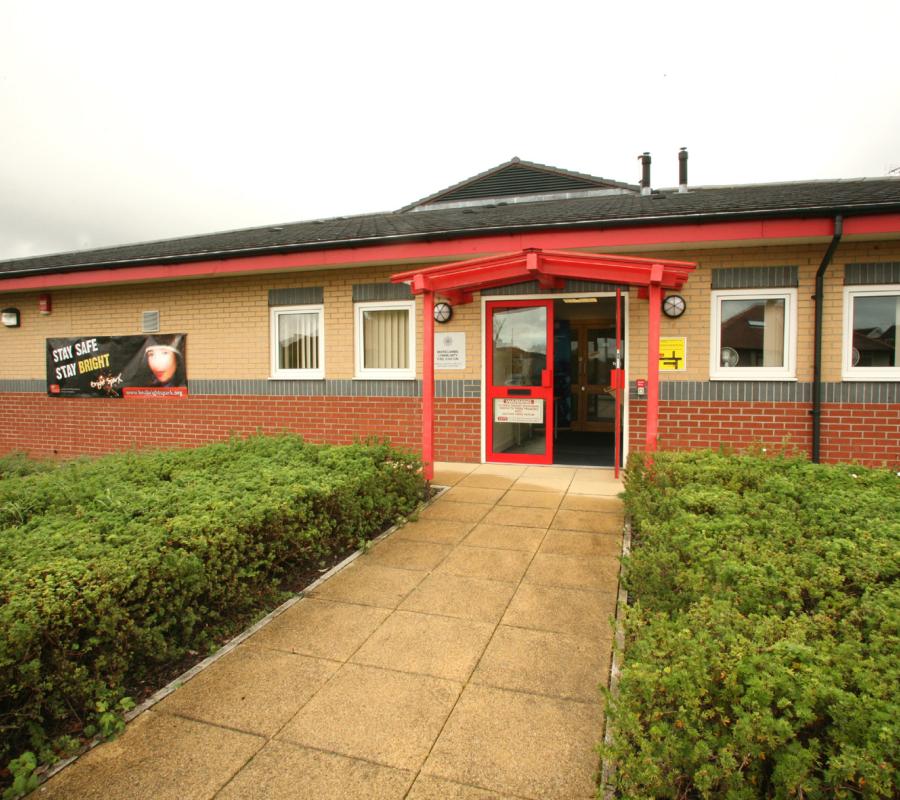Lancashire Fire and Rescue Service has six core strategies: our People, Prevention, Protection, Response, Financial and Digital Strategies. Our prevention, protection and response activities address the fire and rescue related risks that are identified in those strategies and outline the measures in place and actions we take to make Lancashire safer.
Each strategy is periodically reviewed and evaluated to ensure we are delivering against our outlined objectives and are doing so in the most efficient and effective way. Wherever necessary, changes will be made within each strategy to ensure we operate in line with our aim, priorities and values.
People Strategy
We employ in the region of 1200 staff, with most employed in an operational capacity. As an employer our aim is to have a workforce that is professional, flexible, highly skilled and diverse. Our workforce plan identifies the strategic challenges faced by our staff and the actions we undertake to meet those challenges, ensuring we have the right number of employees with the right skills, qualifications and competencies now and in the future. We continue to improve the diversity of our workforce and our recruitment targets are supported by the delivery of positive attraction and retention activity, aimed at recruiting a workforce which is best able to meet the needs of residents and mitigate the risks they face.
We invest in the training and development of our staff and the leaders within our organisation, ensuring we have a workforce that can meet the challenges of a dynamic operating environment, and leaders who can deliver highly performing teams where all members of staff feel valued and are given the opportunity to fulfil their potential.
Since 2019 the service has been registered as an ‘employer provider’ for level three operational firefighter apprenticeships. We will look to maintain this status over the duration of the CRMP and continue to deliver and develop our offering while working towards an outstanding OFSTED rating.
We also commit to providing wider apprenticeship opportunities within non-operational roles as we believe offering development packages to new and existing staff benefits individuals and subsequently our organisation.
We are committed to safeguarding the health and wellbeing of our staff, creating a resilient workforce which can respond positively and effectively to diverse types of emergencies.
Prevention Strategy
We will build on learning acquired during the pandemic and develop new innovative ways to deliver our community safety activities
Continue to develop our operational and community safety staff in the field of fire safety regulation and hazards in the built environment, to increase the effectiveness of our business fire safety checks, risk intelligence and referrals to fire protection.
Seek to build on learning acquired during the pandemic and develop new and innovative ways to deliver our community safety activities, ensuring the focus remains on engaging our target groups and delivering effective outcomes.
Continue to refine our Home Fire Safety Check and Safe and Well service in line with evolving national guidance to ensure the offer remains person centred, and risk is evaluated in a manner that reflects best practice.
Refine and expand our preferred partner register to ensure we work with a range of organisations whose service users’ needs align to recognised fire risk factors.
Identify and review opportunities for sharing data and risk intelligence with organisations who work with people who are at significant risk from fire.
Seek to strengthen our links with Lancashire’s telecare providers to collectively build and operate a domestic automatic fire alarm policy.
Continue to act as an enabler and work with partners to reduce water risk.
Continue to refine our core education offer and develop new products and delivery methods where the data and evidence demonstrates this is needed to help keep young people safe.
Continue to deliver the Team programme on behalf of the Prince’s Trust ensuring recruitment focusses on those who will benefit the most and community projects are aligned to mitigation of local risks.
Explore and enable the establishment of a Lancashire Water Safety Partnership.
Continue to develop our cadet offer in line with national guidance and expand the locations on offer in line with risk and resources.
Ensure the investigation of crime scenes involving fire conforms to evolving regulatory requirements.
Continue to develop how we gather and use incident intelligence to refine our prevention and campaign approaches.
Protection Strategy
In line with identified risks, our protection strategy focuses on the following key areas:
Continue to develop strategic collaborations to raise fire safety awareness and improve fire safety standards in premises before inspections are undertaken.
Use local, regional and national intelligence and learning to continually evolve and refine our protection services.
Seek to build on the learning acquired during the pandemic and create new and innovative ways to deliver protection services, adopting digital approaches where appropriate.
Contribute to the continual improvement of fire protection activities coordinated through the NFCC community risk programme and seek to refine our risk-based inspection programme in line with emerging national guidance.
Review fire protection delivery arrangements to ensure inspection and consultation resources are aligned to risk and working practices are efficient and effective.
Review fire engine attendance policy to automatic fire alarms and the associated unwanted fire signals policy.
Continue to adopt the NFCC competency framework for fire safety regulators.
Complete the improvement actions required by virtue of the Grenfell Inquiry.
Continue to develop strategic collaborations to raise fire safety awareness and improve fire safety standards in premises before inspections are undertaken.
Use local, regional and national intelligence and learning to continually evolve and refine our protection services.
Seek to build on the learning acquired during the pandemic and create new and innovative ways to deliver protection services, adopting digital approaches where appropriate.
Response Strategy
Ensuring that the service has sufficient and proportionate emergency response arrangements available to respond to and manage a wide range of risks and threats, delivered through a range of local, regional and national delivery models.
Enabling the service to achieve its priorities: preventing, protecting, responding, valuing our people and delivering value for money. Our STRIVE values are the foundation of everything we achieve.
Supporting the creation of a positive, inclusive culture that encourages innovation and perpetual improvement. Enabling us to give the best services to our communities and be the best fire and rescue service in the UK.
Our response strategy has been written to translate the framework of expectations laid out in relevant legislation, guidance documents and national reports into appropriate action as well as considering this plan and the three pillars of the HMICFRS inspection framework: efficiency, effectiveness and people.
Constantly reviewing our approach to providing and deploying resources to ensure they remain flexible. Where possible, seeking to improve our response capabilities to deal with the wide range of foreseeable emergencies and risks faced by the service in an ever-evolving landscape, mitigating demand and risk.
Continuing to prioritise this statutory requirement, ensuring that our firefighters are provided with the best training, facilities, appliances and equipment to ensure they remain as effective and efficient as possible while remaining focussed on their health, safety and wellbeing.
Our Financial Strategy
Due to economic uncertainty, an anticipated multi-year settlement was again postponed, hence the Local Government Finance Settlement only covers 2023-23. Similarly, the Fair Funding Review, which looked to reassess the methodology under which funding was allocated to individual authorities, and the implementation of a revised Business Rates Retention Scheme, have both been put on hold for at least a further 12 months.
The lack of a multi-year settlement makes longer term planning more difficult as there can be no certainty around future funding forecasts. Offsetting this is the opportunity provided by the £5 council tax flexibility allowed in 2022-23. Raising council tax by this amount provides an opportunity to address some of the capacity, resilience and pay issues within support functions, supporting the delivery of further efficiencies. As this increase sets a new council tax base for future years it provides greater long term funding certainty, which eases longer term budget pressures and forms the basis of future investment requirements, as set out in our £47m capital programme. These investments are essential if we are to achieve our ambition to be outstanding in all that we do by being the best trained, best equipped, best accommodated and most professional fire and rescue service in the country.
Our Digital Strategy
Our Digital Strategy sets out a framework of how we will progress that agenda together with setting out some of the external influences there are that we need to consider.
These include our active engagement in digital and data workstreams that are underway in the National Fire Chiefs Council (NFCC) and which are attempting to standardise data and technology approaches within FRS across the country. This will ensure best practice and best value to the communities that we serve.
In addition, we will consider best practice guidelines from central government together with other partner agency collaborations wherever possible.
We will also look to align ourselves with established and accepted best practices and working patterns from across the technology sector.
The underpinning focus throughout our digital journey will be on maximising the effectiveness and efficiency of our workforce to ensure the best possible service and levels of engagement for our communities.




